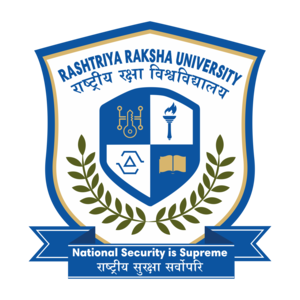
Role of NITI Aayog in Sustainable Groundwater Management
ROLE OF NITI AAYOG IN SUSTAINABLE GROUNDWATER MANAGEMENT
- Soujanya Ramaswamy
Water is the elixir of life and groundwater in recent years has been the most utilised source of it. The cause for this is that it is ubiquitous and demands a lower capital cost. It works as a poverty reduction tool in the rural districts of India. Groundwater can be given credit for its significant contributions to the growth in India’s economy. Around 85% or rural domestic requirements, 50% of the urban requirements and 50% of the irrigational requirements are being met by groundwater. This alone speaks volumes about the importance of this resource to our nation. Although a highly dependable source, but its indiscriminate exploitation without considering recharge capacities like aquifers and several other environmental factors has resulted in its depletion. The pressure of the already existing stress on the availability of the resource is drastically increased by the individual initiatives that are usually unplanned and non-scientific. India tops the consumption of groundwater charts globally with an estimated consumption of 230 km annually. The annual replenished resource estimates to 433 km annually. This surplus figure however can be misleading due to the drastic variations of availability and extraction spread across the nation geographically. The mass scale exploitation of this resource has expanded exponentially during the last five decades with the advancement of irrigational equipments in many states. The number of tube wells jumped from less than a million on the 1980’s to 10 million in the 90’s and crossed 15 million by 2010. Over the course of the last three decades, India has witnessed and intense depletion of this resource driven by climate change and over-extraction. A paper published by the by the Hydrological Sciences Laboratory at NASA said that groundwater in northern India is depleting at an alarming rate of 19.2 gig tons annually. This equals a third of the capacity of India’s largest reservoirs.
The heavy use of groundwater for consumption in India has caused the resource itself to reach a critical limit in some states. The national groundwater assessment revealed that around a third of the country’s’ aquifers fall under the category of overexploited, semi-critical or critical. Many aquifers in the north western region have touched an unsustainable level of exploitation. Punjab, for example, has around 75% of its aquifers overdrawn and Rajasthan has 60. The socio-economic consequences of this depletion are grave as the depletion is primarily concentrated in densely populated and economically productive areas. This can potentially turn out to be a serious hazard for achieving food security while sustaining environmental quality and economic growth. Several other long term impacts of the same include de-saturation of aquifers, the massive decline in the groundwater tables and the subsequent increase in the requirement of energy to retrieve water from deeper levels. The quality of groundwater is also affected due to increase in salinity levels in the coastal regions of the nation. The other side of the story is that despite availability certain places lack accessibility due to unavailability of equipments.
The gravity of the situation demands immediate attention toward the same. To avert a looming water crisis a comprehensive plan has to be prepared identifying strategies for sustainable and scientific management of the remaining resource in the nation. The plans must also address the issues of imbalanced development of groundwater in the nation while suggesting ways to accelerate the development of groundwater in under developed areas. For sustainable use, there is an urgent need to replenish over exploited aquifers. Untreated waste water which constitutes up to 80% of the total water supplied to households holds a serious risk at polluting the already scarce groundwater.
India is a Federal nation that believes in the division of power between the centre and states to an optimal level. To this effect, introduced three lists splitting the jurisdiction of the subject matter between the centre and states. ‘Water’ including supplies, irrigation, drainage and storage, but explicitly excluding inter-state rivers falls under the state list. Groundwater is included however, by implication. Recently though, the Union wished to put this under the union list or the concurrent list and this was opposed by the states. In 1997 a Supreme Court ruled that the centre can establish an authority to monitor to use of groundwater, and so the Central Ground Water-Board was constituted. It primarily takes periodic assessments in their regional offices through 16,000 observational wells spanned across the nation. Under the Environment (Protection) Act, the CWGA is entitled to notify areas where the resource is said to be developed beyond the verge or on the verge of beyond the natural recharge capacity. The Board is also responsible for issuing necessary regulatory directions with subsequent penal provisions. Local bodies are appointed by the authority to enforce regulatory measures in notified areas and control overexploitation in each state. Other listed functions of the authority include educating people, achieving quality standards and to persuade states to set up their own groundwater authorities. Another step to cover up for the absence of a comprehensive law to regulate groundwater resources in India was taken in the form of the Model Groundwater Bills. The latest Bill (2005) per se explicitly provides for groundwater protection zones and security plans. This is done to propagate aquifer recharge and protect against quality deterioration. The National Water Policy is another attempt at streamlining formal regulation. This works towards the management of groundwater as a community resource for sustainable and equitable development of all related sectors. It suggests separate electric supply for pumping groundwater for agricultural use from that for other rural purposes. It also cites the necessity for National Framework legislation on water. It suggested converting water into an economic good where there were tariffs involves and differential pricing. This was meant to curb wastage. There was a suggestion to enact Water framework Law to give it a legal status. It was meant to work as umbrella legislation.
The Composite Water Management Index a step by NITI Aayog is a journey towards Jal Sanchay, Jal Sanrakshan and Jal Sinchan to rejoice the spirit of federalism in the nation. The index proposed moving the focus from conventional style investment in many infrastructure projects, to taking up activities at the grass-root level in coordination with local communities to make sure there is equitable access of water. According to studies, 820 million people in the nation have as per capita water availability less than or near 1000 m3 (threshold for scarcity- Falkenmark Index). There is a requirement for around 20 Lac Cr worth investments to cover the predicted water supply gap by 2030. If not, the demand will exceed the supply by twofold.
A critical challenge of the impending water crisis is a collection of data. There is no proper data on water. The systems lack in coverage, efficiency and robustness. The quality of the data is often inferior rending it unreliable. This was rectified by NITI Aayog at the primary level by getting its data checked by IPE Global. They followed a four-step procedure while acquiring data namely-
• Checking
• Review
• Verification
• Scoring
The index is computed using certain indicators-
• Source augmentation and restoration of water bodies
• Source augmentation(Groundwater)
• Major and medium irrigation
• Watershed development
• Participatory irrigation practices
• Sustainable on-farm irrigation practices
• Rural drinking water
• Urban water supply and sanitation
• Policy and governance.
After collecting data on all aforementioned grounds, the data is analysed state-wise and an exhaustive report is published to throw light upon the looming water crisis in our nation. The report also suggests future courses of action for the same to circumvent the crisis. One example of a successful system for replenishing ground water is a case from Gujarat.
Bhungroo – ground water injection well:
This system in Gujarat injects the surplus rainfall underground to improve water tables of the state. This is artificially recharging aquifers to sustain farming and domestic activities for over half a year.
As a future course of action, it is suggested that the states must adopt a water lens while formulating policies and planning across sectors. This will help come up with holistic solution to the problems faced by the nations. This index is a stepping stone for the journey towards better water management. This sets a foundation for quality data culture within water institutions. The path to optimal utilisation of this precious resource is a long and tedious one, but we as a nation are a step closer to the same.
REFERENCES :-
[1] Composite Water Management Index August, 2019, NITI Aayog
[2] B. M. Jha, S. K. Sinha, ‘Towards Better management of Ground Water resources in India’ (2009) <https://www.researchgate.net/about> accessed on 10 April 2020
[3] Water Governance Facility, ‘Groundwater Governance in India: Stumbling Blocks for Law and Compliance’ (2013)<https://watergovernance.org/wp-content >












